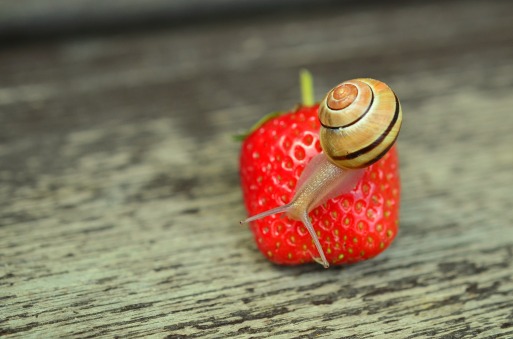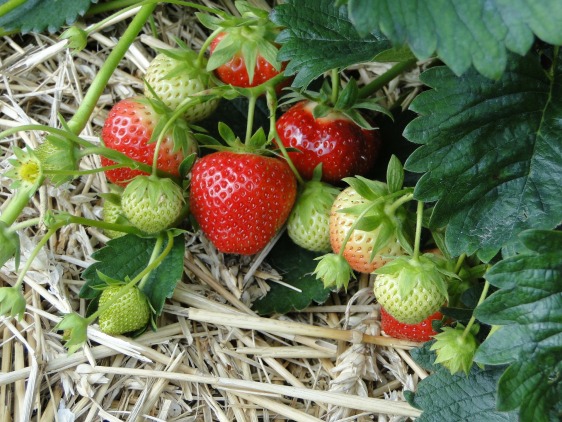Growing strawberries from seed is extremely exciting- I should know! While I didn’t exactly stratify my berries in my experiment, they did sit in the refrigerator for 2 weeks. This might have been all of the stratifying that they needed; so, chances are, your local grocer has already taken care of this.
But to be on the SAFE side, especially if you only have a few seeds or if you have a very short window of time, you’ll want to stratify. If you have several dozen seeds, you could split the process and stratify half, and plant the other half.
If you decide to grow a wonderful June bearing variety, you will likely find yourself overrun come the second year. June bearing strawberries send out an incredible amount of runners; while they’re a fruit bearing perennial rather than your standard herb, they would most definitely make it onto my list of most profitable homestead herbs to grow and sell otherwise! I’ve had a single mother give rise to over 80 daughter plants in one season; if I sold each plant at $0.50 (a steal, considering they’re $3.50+ in stores!), I could have made $40 from those plants!

What Is Strawberry Seed Stratification?
When you stratify a seed, you are putting it through a dormant phase. This dormancy generally mimics a season in which the plant is not active, such as winter. In order to mimic a dormancy, you will need to meet a few environmental needs for the seed. This might include temperature, lighting, and humidity preferences of the seeds. The stratification of seeds in nature allows the previous year’s plant’s offspring to survive through winter without sprouting; then, when ideal spring growing conditions arrive, the seeds are encouraged to sprout. This is an ingenious survival trait in the plant kingdom, but it can prove to be a hiccup when trying to sprout seeds in an “off” season.

Preparing Seeds for Stratification
Before putting strawberry seeds into dormancy, you need to ensure that your seeds are clean. I have done this with whole strawberries, but if you want to avoid any icky slime or potential fruit flies, I recommend separating the seeds from the fruit and cleaning them. Once the seeds are clean, allow them to dry thoroughly. Do not freeze wet seeds; this might encourage cracking among the seeds, lowering your chances of success. Place your clean, dry seeds into a folded paper towel, and slide them into a ziploc bag. Date the bag so that you know when stratification began, and write the variety of the plant on the bag. Please keep in mind that grocery strawberry plants may NOT seed true, which means you could get a very different berry than the one that the seeds came from. They are now all ready to go!
The Strawberry Seed Freezer Process
In the case of strawberry seeds, storing them at a very low temperature is generally good enough. To be perfectly honest, you can just throw the seeds into a bag, and let them sit in your freezer for 2 to 6 weeks. To slowly break the dormancy, take the seeds out of your freezer and move them to your refrigerator for one to two weeks BEFORE you intend to germinate them. This will bring the seeds to a thawing temperature, but they will still be cold; mimicking the weather in early spring. You can then move them to a cool location of your home (perhaps near an air vent or a drafty cool window) if you would like to be extra cautious in breaking the dormancy phase to increase germination rates

Planting Strawberry Seeds and Caring for Seedlings
Planting the seeds is the fun part! However, strawberry seeds are VERY slow to germinate. I’m talking 14 to 21 days! My preferred method for sprouting them is to keep the seeds in the baggy with the paper towel, spread them out evenly, tuck them in the bag, and put water inside of the bag without disturbing the seed placement. You want just enough water to be absorbed by the paper towel; if water collects in the bag, drain it to prevent rot and mold! This is a set it and forget it method. Once the seeds root or sprout, you can pull them out one by one and plant them carefully. Put the rest of the seeds back in the bag to continue to germinate. This reduces work, saves soil and seed trays, and it’s overall easier. You don’t have to keep an eye on soil moisture either!
If you wish to plant in a seed tray, start with two seeds per cell (or 1 per cell, if you prefer to get the most out of your seeds). Plant them 1/8 to 1/4 of an inch deep, in fine, high quality potting soil. Cover the seeds with a dome, and allow them to sit in a warm place for 2 to 4 weeks. As most seeds sprout, remove the dome and ensure that all cells are continuously moist. Do not allow them to dry for long periods while they are young and tender. At 10 to 12 weeks old, as the seedlings reach 1 to 3 inches tall, transplant them into larger pots if you wish. You could keep them in the seedling trays for longer, especially if you are overwintering them and the weather outside is cold. If they must stay in the seedling trays for over 4 months AFTER sprouting, ensure that they receive a gentle liquid fertilizer to keep them healthy and growing.

